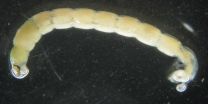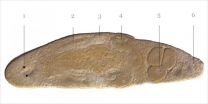(Press-News.org) Working in cell cultures and mice, researchers at Johns Hopkins have found that an experimental drug called fostamatinib combined with the chemotherapy drug paclitaxel may overcome ovarian cancer cells' resistance to paclitaxel.
Scientists elsewhere are already testing fostamatinib in people with lymphoma and idiopathic thrombocytopenia purpura, an autoimmune disorder. Based on results of the current study described in a report online June 18 in the journal Cancer Cell, Johns Hopkins researchers say they are planning a phase I clinical trial to test the paclitaxel-fostamatinib combination therapy in patients with recurrent advanced ovarian cancer. That study is expected to begin this fall. Fostamatinib is not yet approved by the Food and Drug Administration.
Paclitaxel and another chemotherapy drug, carboplatin, are considered standard, first-line treatments for advanced ovarian cancer, experts say, and most patients respond to the drugs initially. However, the majority of patients develop treatment-resistant tumors, and only 10 to 15 percent of these patients survive long term, says Ie-Ming Shih, M.D., Ph.D., the Richard W. TeLinde Distinguished Professor in the department of Gynecology and Obstetrics, who led the study with Tian-Li Wang, Ph.D., an associate professor of pathology and oncology at the Johns Hopkins University School of Medicine. More than 21,000 women are expected to be diagnosed with ovarian cancer this year in the U.S., and more than 14,000 will die from it.
Shih, Wang and their colleagues tested fostamatinib's power to reduce tumor size in mice implanted with human ovarian cancer cells that were resistant to paclitaxel. A combination of fostamatinib and paclitaxel reduced tumor size in six mice by up to 87 percent, compared with no shrinkage in six untreated animals after three weeks. After five weeks, the combination treatment in the six mice decreased tumor size by up to 66 percent, compared with six mice treated with only paclitaxel.
When patients with advanced ovarian cancer become resistant to one drug, clinicians usually prescribe a new drug. But Shih says there are only a few drug options proven effective for treating advanced ovarian cancer, and that patients might be at risk for different or worse side effects after adding a new drug to their regimen.
In a previous study, Shih, Wang and their colleagues found that paclitaxel resistance may occur because of higher levels of an enzyme found in ovarian cancer cells called spleen tyrosine kinase, or SYK. The levels were highest in recurrent tumors compared with matched primary tumors. The Johns Hopkins team confirmed this result in the current Cancer Cell study.
The scientists then analyzed 25 different ovarian cancer cell lines in the laboratory and discovered that the higher the amount of active SYK in the cell lines, the more resistant those cells were to paclitaxel treatment. But when the researchers treated the resistant cells with the SYK inhibitor fostamatinib, they were able to increase the paclitaxel sensitivity of the cells.
Paclitaxel targets a part of the cell's internal skeleton called microtubules and stabilizes the structure so that the cell cannot rapidly grow and divide. Fostamatinib's effect on microtubules seems to increase the stabilizing effect of paclitaxel, even in resistant cells, which in turn may prevent cancer cells from proliferating, says Yu Yu, Ph.D., a postdoctoral fellow at the Johns Hopkins University School of Medicine and co-author of the study.
Based on what is already known about fostamatinib toxicity, Shih says that patients using a combination of fostamatinib and paclitaxel may experience side effects that include low white blood cell counts, nausea, vomiting and diarrhea.
INFORMATION:
Funding for the study was provided by the National Institutes of Health (RO1CA103937, W81XWH-11-2-0230/OC100517, RO1CA148826, R21CA187512, RO1CA174388, U54CA143868, U24CA160036), the Conquer Cancer Foundation, the HERA Women's Cancer Foundation and the Ovarian Cancer Research Fund (292512).
Other scientists involved in the study include Stephanie Gaillard, Jude M. Phillip, Tai-Chung Huang, Sneha M. Pinto, Nayara G. Tessarollo, Zhen Zhang, Akhilesh Pandey and Denis Wirtz from Johns Hopkins; Ayse Ayhan from Seirei Mikatahara Hospital and Hamamatsu University School of Medicine; and Ben Davidson from the University of Oslo. The scientists declare no conflicts of interest.
On the Web:
Cancer Cell: DOI: http://dx.doi.org/10.1016/j.ccell.2015.05.009
Johns Hopkins Kimmel Cancer Center
Office of Public Affairs
Media Contacts:
Vanessa Wasta, 410-614-2916, wasta@jhmi.edu
Amy Mone, 410-614-2915, amone@jhmi.edu
A team from the RIKEN Center for Emergent Matter Science, along with collaborators from several Japanese institutions, have successfully produced pairs of spin-entangled electrons and demonstrated, for the first time, that these electrons remain entangled even when they are separated from one another on a chip. This research could contribute to the creation of futuristic quantum networks operating using quantum teleportation, which could allow information contained in quantum bits--qubits--to be shared between many elements on chip, a key requirement to scale up the power ...
St John's Wort can produce the same adverse reactions as antidepressants, and serious side effects can occur when the two are taken together, according to new University of Adelaide research.
In a study published this month in the journal, Clinical and Experimental Pharmacology and Physiology, researchers compared the pattern of spontaneous reported adverse drug reactions to St John's Wort, a herbal treatment for depression, and fluoxetine, a commonly prescribed antidepressant. They found the adverse reactions were the same for people who took St John's Wort as it was ...
A research in the North Caucasus, conducted by a group of Russian scientists over three years, has revealed an intermediate distribution of Caucasian populations of non-biting midges between Europe and Siberia. Their observations also proved some interesting morphological distinctions between the studied populations and the previously researched ones from Europe and Siberia. Their results have been published in the open-access journal Comparative Cytogenetics.
The study on karyotypical and morphological peculiarities of Ch. bernensis is a part of the investigation of ...
Sandcastles are a prime example of how adding a small amount of liquid to a granular material changes its characteristics. But understanding the effect of a liquid wetting randomly oriented fibres in a fibrous medium remains a mystery. Relevant to the building industry, which uses glass wool, for instance, this phenomenon can be better understood by studying the behaviour of a liquid trapped between two parallel fibres. It can either remain in the shape of a drop or spread between the fibres into a long and thin column of liquid. Now, scientists have demonstrated that the ...
Failing to find a mating partner is a dent to the reproductive prospects of any animal, but in the flatworm species Macrostomum hystrix it might involve a real headache. Zoologists from the Universities of Basel and Bielefeld have discovered the extraordinary lengths to which this animal is willing to go in order to reproduce - including apparently injecting sperm directly into their own heads. The academic journal Proceedings of the Royal Society B has published their findings.
The absence of a mate usually spells disaster for sexually reproducing animals. However, some ...
Atoms absorb and emit light of various wavelengths. Physicists have long known that there are some tiny changes, or shifts, in the light that gets absorbed or emitted, due to the properties of the atomic nucleus. Now, a team of scientists has elucidated the so-called hyperfine structure of cadmium atoms. Relying on a method called laser spectroscopy, they have measured variations in the energy transition within cadmium atom - Cd in the periodic table. They studied a chain of isotopes with an odd number of neutrons ranging from 59 in 107Cd to 75 in 123Cd. From these high-precision ...
A good night's sleep has long been recommended to those who have experienced a traumatic event. But an Oxford University-led study provides preliminary experimental work suggesting it could actually be the wrong thing to do.
The research, conducted in Oxford's Wellcome Trust-funded Sleep and Circadian Neuroscience Institute (SCNi) and published in the journal Sleep, showed that sleep deprivation might prevent people from consolidating memories of experimental trauma (emotional film clips in the study), reducing their tendency to experience flashbacks.
Dr Kate Porcheret, ...
(SACRAMENTO, Calif.) -- Soldiers injured during the conflicts in Iraq and Afghanistan have the highest survival rates in history, thanks to the availability of surgeons skilled in combat care. But combat-ready surgical skills are hard to sustain off the battlefield.
"A lot of knowledge builds up in the military medical enterprise during times of war," said Joseph Galante, who chairs the UC Davis Division of Trauma, Emergency and Critical Care Surgery and is a commander in the U.S. Navy Reserves. "When peacetime comes, that knowledge can slide. We need to identify ways ...
The global supply of seafood is set to change substantially and many people will not be able to enjoy the same quantity and dishes in the future due to climate change and ocean acidification, according to UBC scientists.
These findings were released today in Japan by the Nereus program, an international research team led by UBC scientists and supported by the Nippon Foundation. The Nereus program was formed to study the future of the world's oceans and seafood resources. Today it released a summary of the first phase of its research in a report titled 'Predicting Future ...
ASCO Perspective: Gary Schwartz, MD, ASCO Expert "This study adds to the growing discussion around food and cancer risk. While the findings are intriguing, it's far too soon to recommend any broad changes to grapefruit or orange consumption. Until conclusive data are available, we should continue to be cautious about protecting our skin from sun exposure."
A new analysis of dietary patterns among more than 100,000 Americans suggests that frequent consumption of citrus -- namely whole grapefruit and orange juice -- may be associated with an increased risk of melanoma. ...


